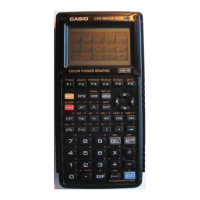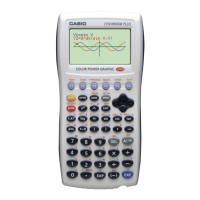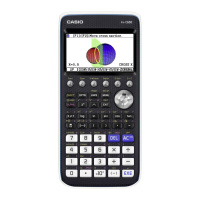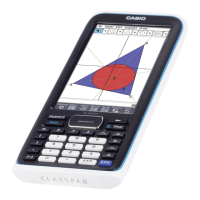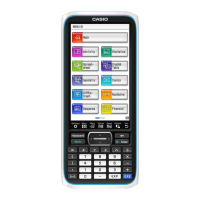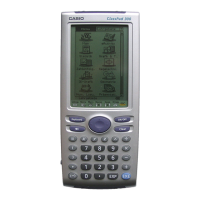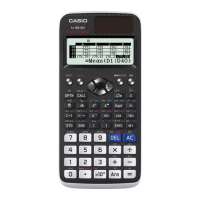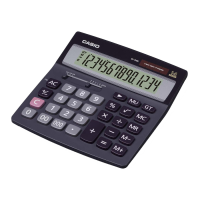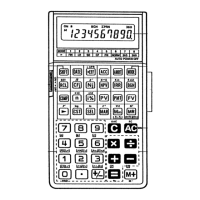20070201
5-3-1
Drawing a Graph
5-3 Drawing a Graph
You can store up to 20 functions in memory. Functions in memory can be edited, recalled,
and graphed.
k Specifying the Graph Type
Before you can store a graph function in memory, you must fi rst specify its graph type.
1. While the Graph relation list is on the display, press 3 (TYPE) to display the graph
type menu, which contains the following items.
• { Y= } / { r= } / { Parm } / { X=c } ... {rectangular coordinate}/{polar coordinate}/{parametric}/
{X=constant}*
1
graph
• { Y> } / { Y< } / { Y t } / { Y s } ... {Y> f
( x )}/{Y< f
( x )}/{Y> f
( x )}/{Y< f
( x )} inequality graph
• { CONV }
• {
' Y= } / { ' Y> } / { ' Y< } / { ' Y t } / { ' Y s }
... {changes the function type of the selected expression}
2. Press the function key that corresponds to the graph type you want to specify.
k Storing Graph Functions
u To store a rectangular coordinate function (Y=) *
2
Example To store the following expression in memory area Y1 :
y = 2 x
2
– 5
3 (TYPE)1 (Y=) (Specifi es rectangular coordinate expression.)
c vx -f (Inputs expression.)
w (Stores expression.)
*
1
Attempting to draw a graph for an expression
in which X is input for an X = constant
expression results in an error.
*
2
A function cannot be stored into a memory area that
already contains a function of a different type from
the one you are trying to store. Select a memory
area that contains a function that is the same type
as the one you are storing, or delete the function in
the memory area to which you are trying to store.

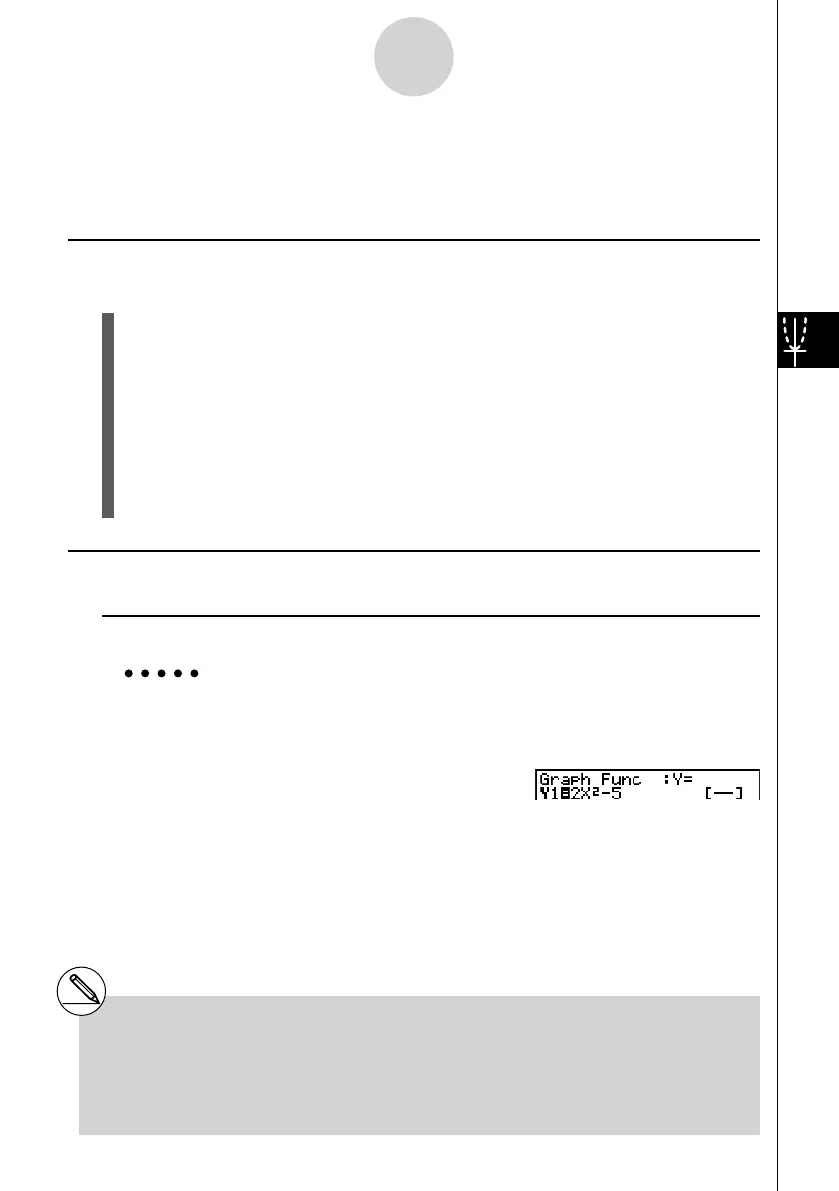